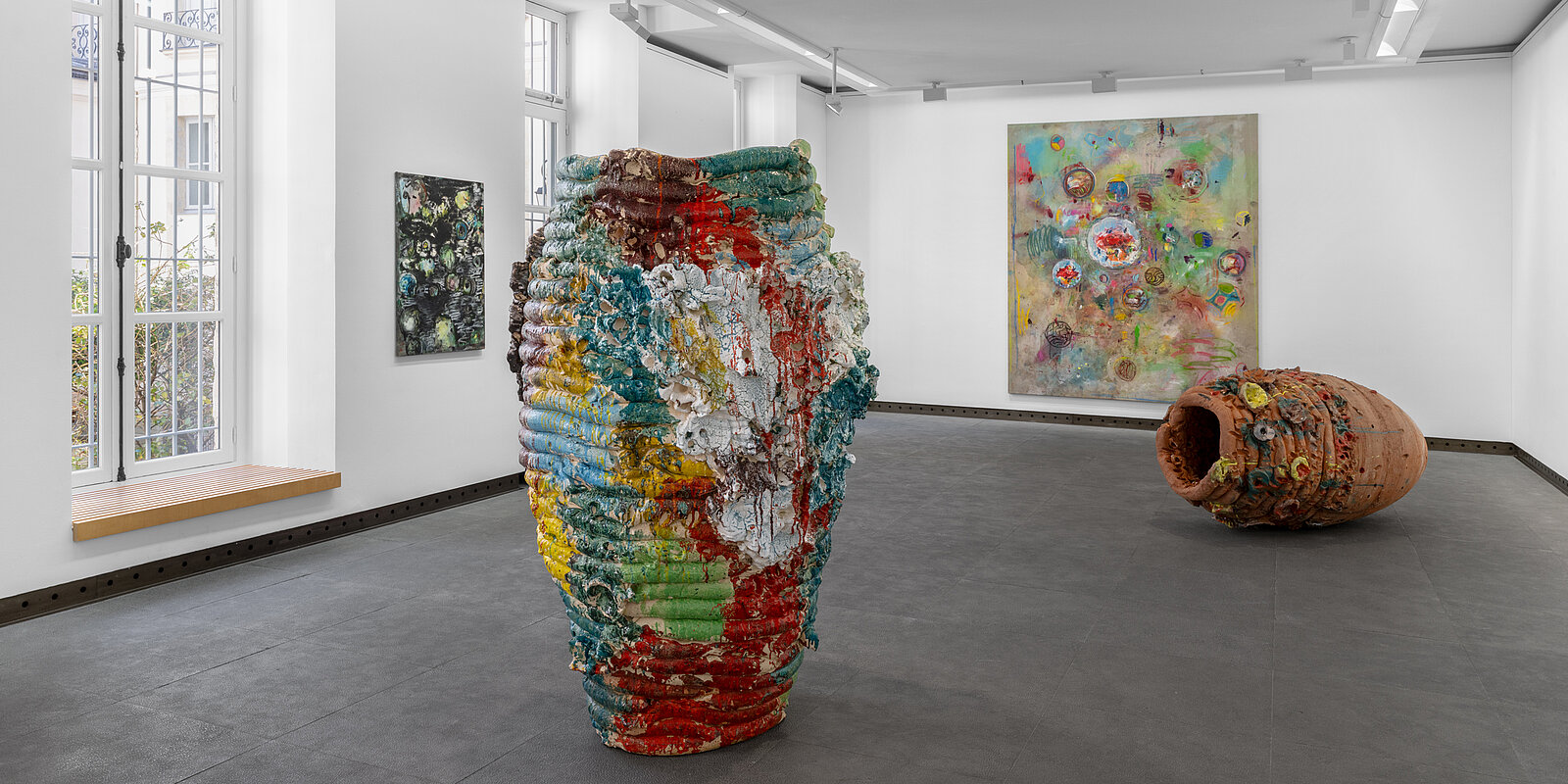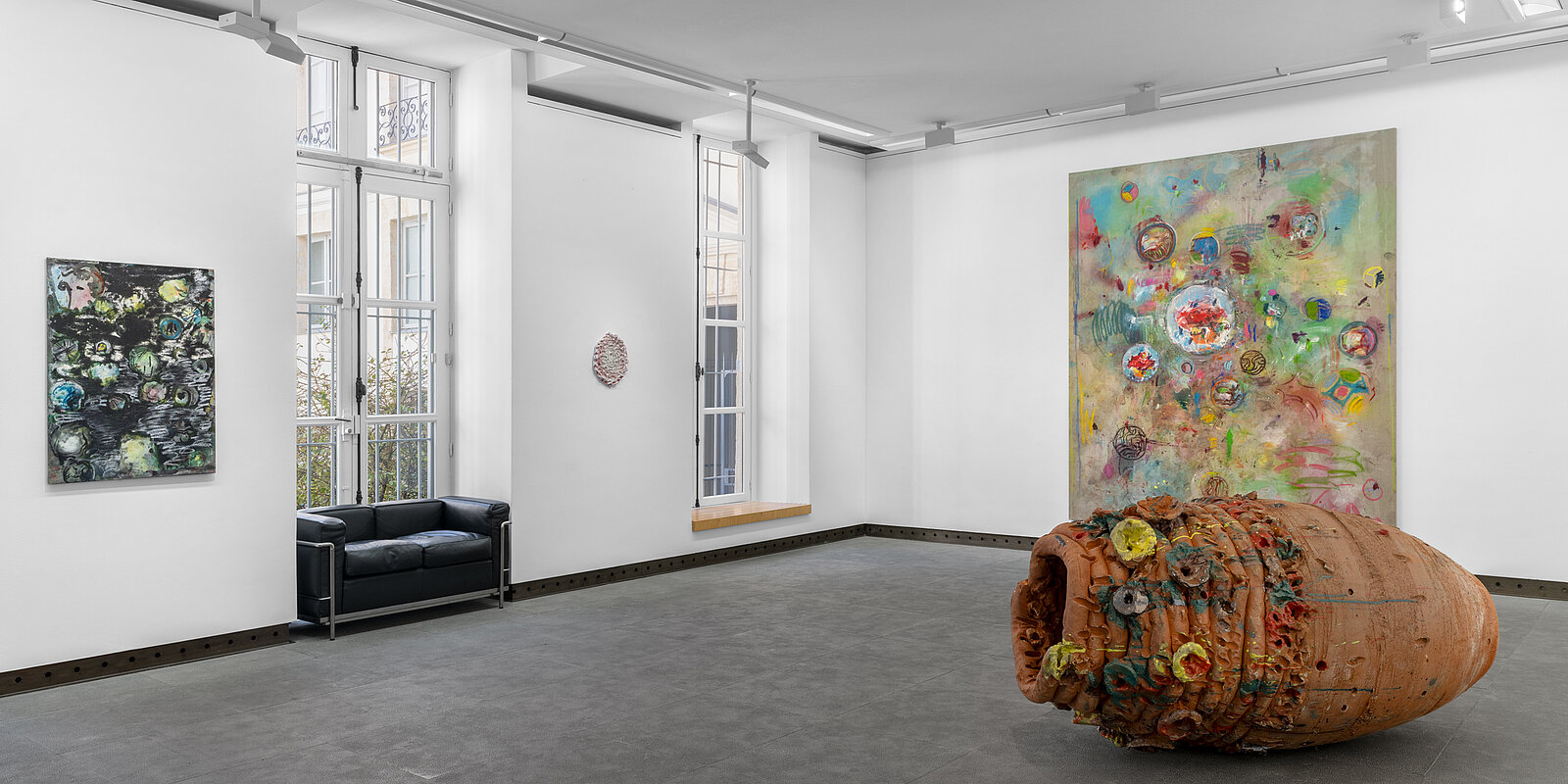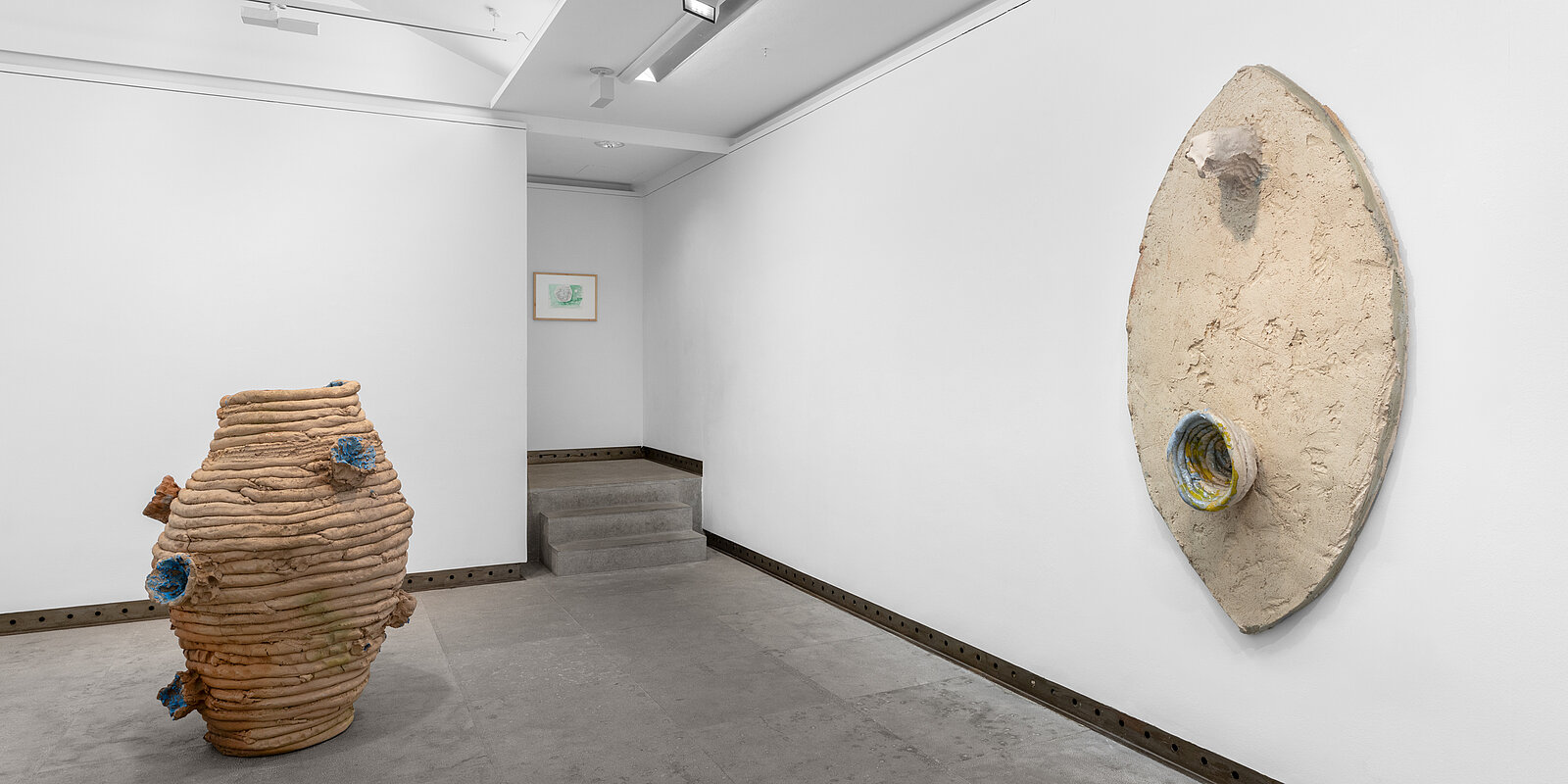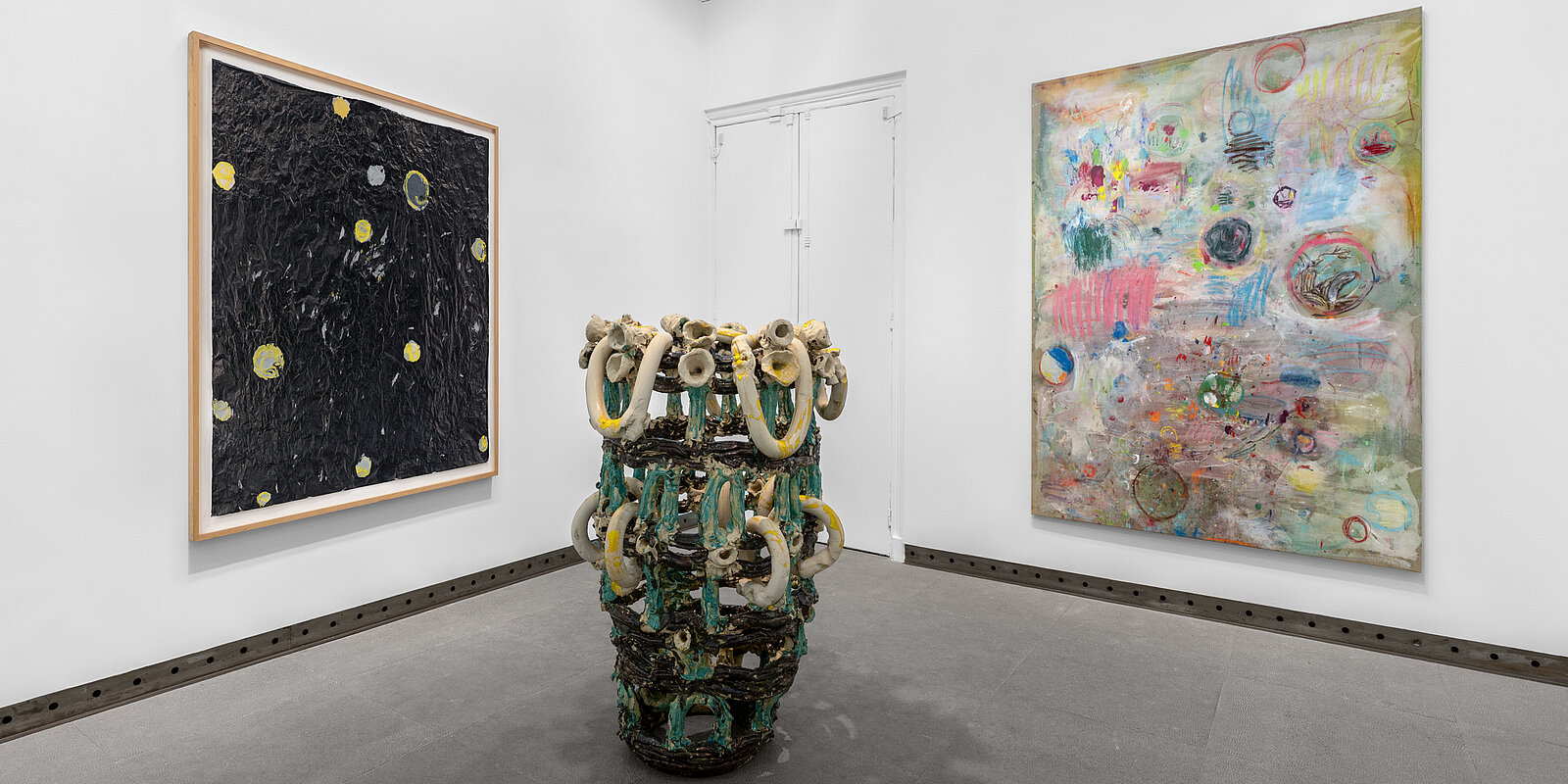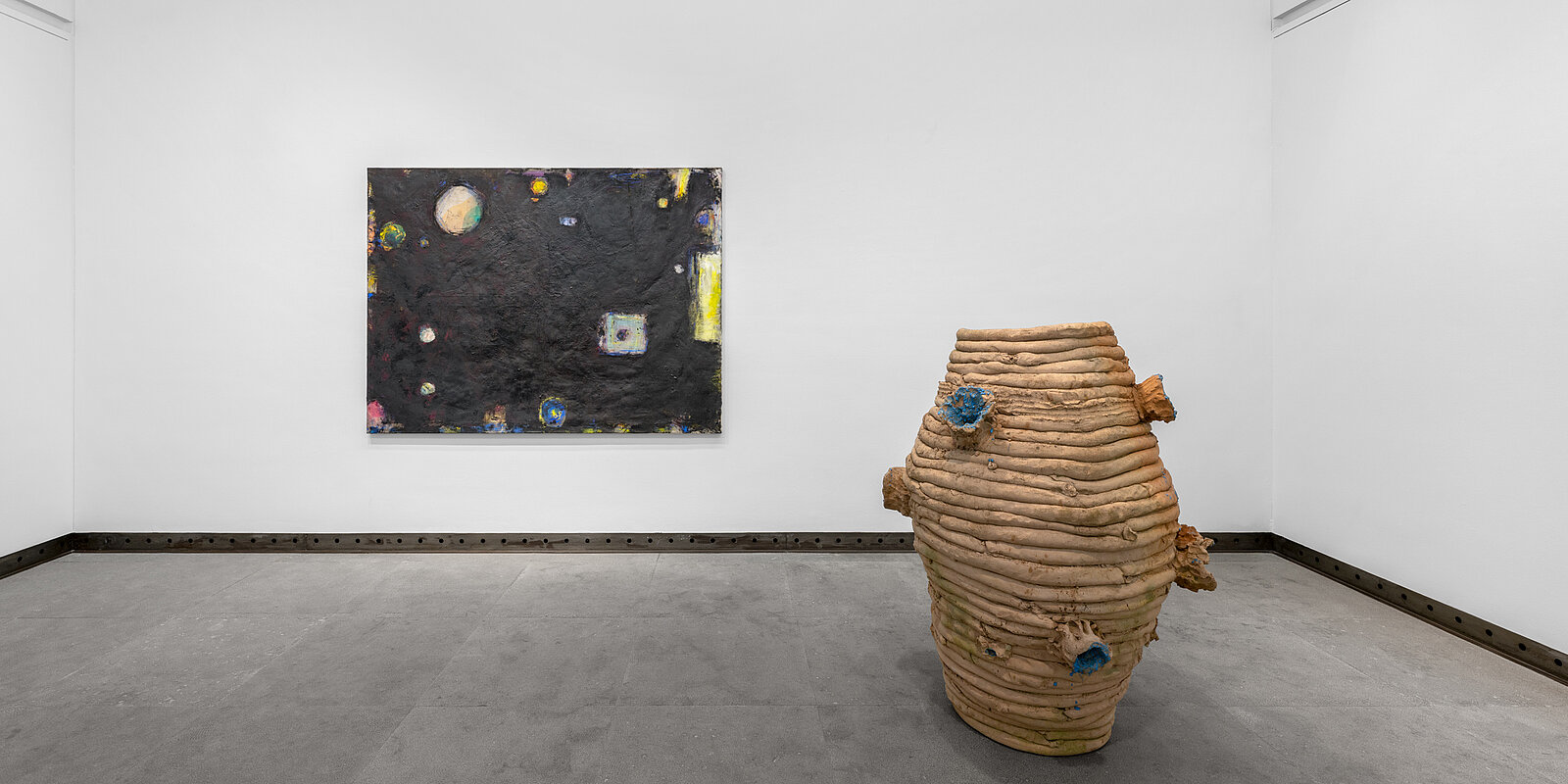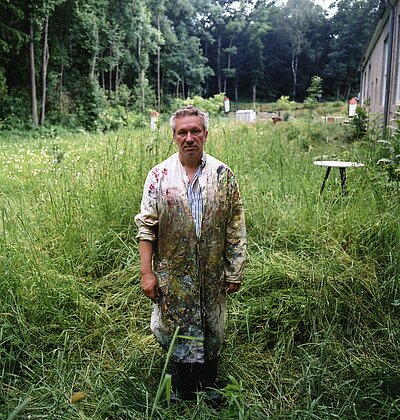Norbert Prangenberg:
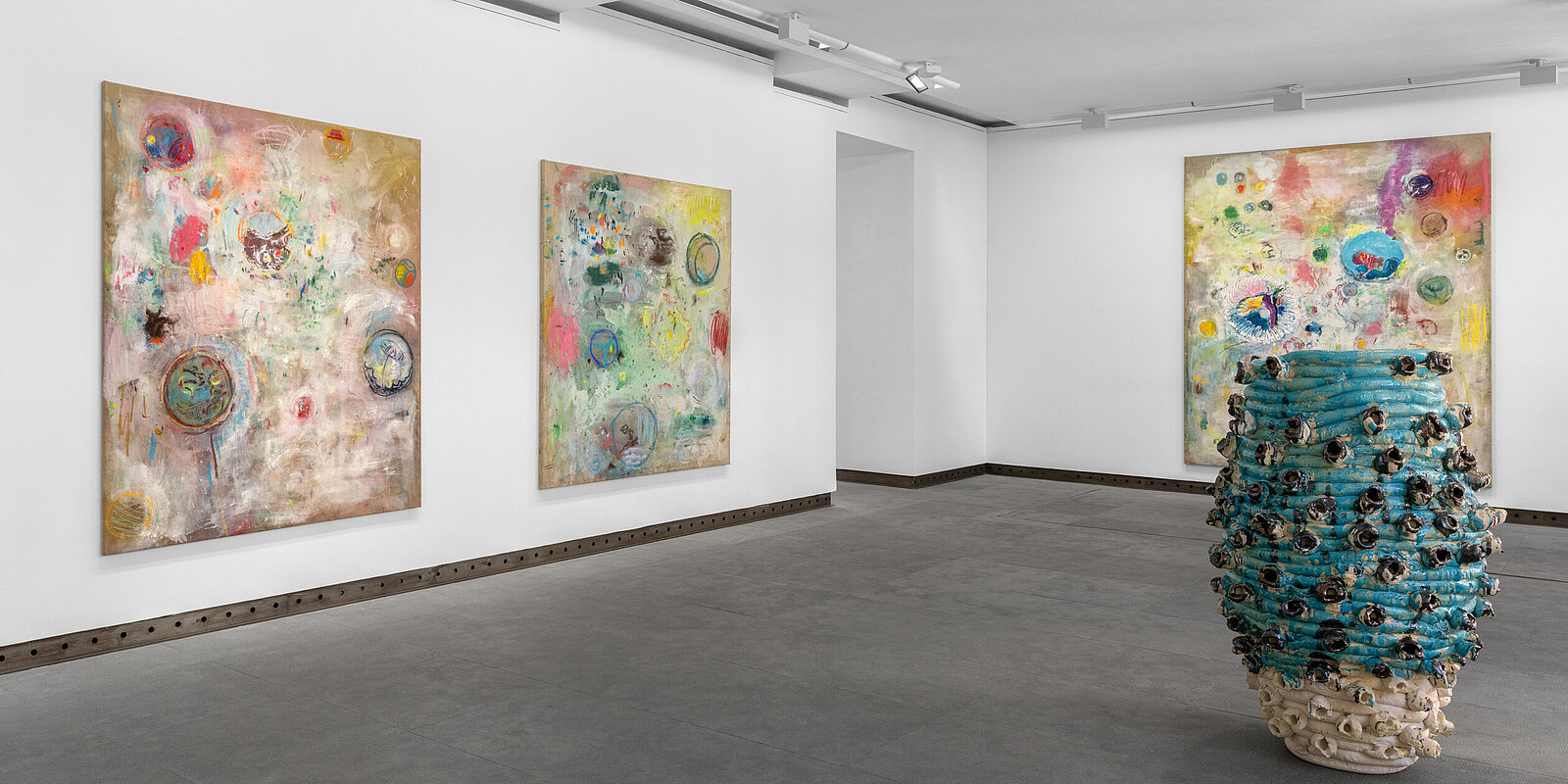
Galerie Karsten Greve Paris
Tuesday - Saturday: 10am - 7pm
Opening
on Saturday, May 31, 2025, from 5pm to 8pm
Galerie Karsten Greve is pleased to present an exhibition dedicated to German artist Norbert Prangenberg (1949–2012). A creator of a visual language that defies categorization, Prangenberg explored painting, drawing, and sculpture with the same gestural and sensory intensity. This exhibition offers a rediscovery of this essential artist through a selection of emblematic works that reveal the richness of his multifaceted and powerful oeuvre.
Oscillating between geometry and organicity, Prangenberg’s universe at first appears dominated by free, untamed forms, both in his sculptures and his paintings. Yet his visual vocabulary is grounded in elementary structures: circles, ellipses, rectangles, triangles, cones, and cylinders guide his hand. His sculptures naturally extend his pictorial compositions, unfolding geometric forms into space.
The natural world also infuses his work. Stylized floral forms, the sensuality of clay, and volumes that evoke living organisms feed into an intuitive body of work.
His subtle, pulsating palette moves between earthy tones and the brilliance of the vegetal world.
The recurring title Figur for his sculptures suggests not so much a human figure as a form, an entity engaged in a dialogue with the world.
Prangenberg’s practice, characterized by a vibrant physicality, stands out for its instinctive and experimental relationship to materials. His paintings, often dense and textured, seem more sculpted than painted. In his small-format works on copper or zinc, he takes advantage of the transparency allowed by layering oil paint on these surfaces, producing a luminous painterly substance.
German art historian Gerhard Storck once observed: “Norbert Prangenberg’s paintings are like water lilies. You don’t immediately see how deep their roots go, because the color floats freely on the surface.”
Often large in scale, his scultpures evoke archaic and symbolic forms, such as amphorae or totems that feel at once ancient and resolutely contemporary.
The artist emerges as a successor to a certain ceramic lineage, drawing a subtle kinship with Lucio Fontana, whose work he first encountered at Galerie Karsten Greve.
Like Fontana, he brought tension between gesture and surface, infusing material with a baroque energy.
His fascination with matter—which he scratches, incises, and shapes with an almost elemental force—is also charged with an inner, nearly spiritual dimension.
For Prangenberg, works are not built from a pre-established plan; they grow on their own, each according to its own organic logic, like living forms.
He did not seek to dominate the material but to collaborate with it.
Cracks, roughness, and amorphous volumes are not erased; on the contrary, they become the very vocabulary of the work.
Born in 1949 in Nettesheim, Germany, Norbert Prangenberg emerged as a major figure in contemporary art. After studying goldsmithing and attending the School of Applied Arts in Düsseldorf, he turned to the visual arts in the 1980s, notably through his large-scale ceramic sculptures. It was also during this period that his enduring collaboration with Karsten Greve began. In the 1990s, Prangenberg worked with the Manufacture de Sèvres and in 1993 became a professor at the Academy of Fine Arts in Munich, where he led the internationally renowned ceramics and glass studio until his death in 2012. His work featured in major international events such as documenta 7 in Kassel in 1982 and the Sydney Biennale in 1986, and is held in prestigious public collections, including the Museum Ludwig and Museum Kolumba in Cologne, the Kunsthalle in Bremen, and Sammlung Hoffmann in Berlin.

